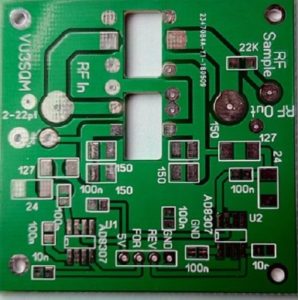I have an inexpensive (~$10 inc post) digital temperature controller that was observed to have very high RF emissions and was unusable because it was incompatible with radio operations here.
There has been enhanced firmware for a STC-1000 controller based on a PIC chip, but in my experience, most seem to be made with an STM8S003F3 chip. More recently, what appears to be a port of the PIC software to STM8 has been published at https://github.com/Emile666/stc1000_stm8.
The enhanced firmware is directed at home brewing for control of long running fermentation processes etc, incorporating storage for a number of multi-step programs (profiles). It is not really suited to more general applications like a fridge controller as for example it is more difficult for the common operation to set the set point.
I thought it might be entertaining to try it out.
Installation of the firmware was straight forward, I had the necessary programming adapter and software.
Interestingly, after updating the firmware, the device would not start on its original power supply. My suspicion is that the new firmware runs the LED display at higher duty cycle and the power supply could not withstand the load.
Since the power supply had RF emission problems, it was removed and the device converted to 12V DC.

Above, the large components of the switched mode power supply were removed, a Polyswitch protective device installed and input routed to the output terminals of the old 12V output switched mode power supply (white wire is -ve, brown wire is +ve). Continue reading STC-1000 firmware change
Last update: 15th June, 2020, 6:54 AM








